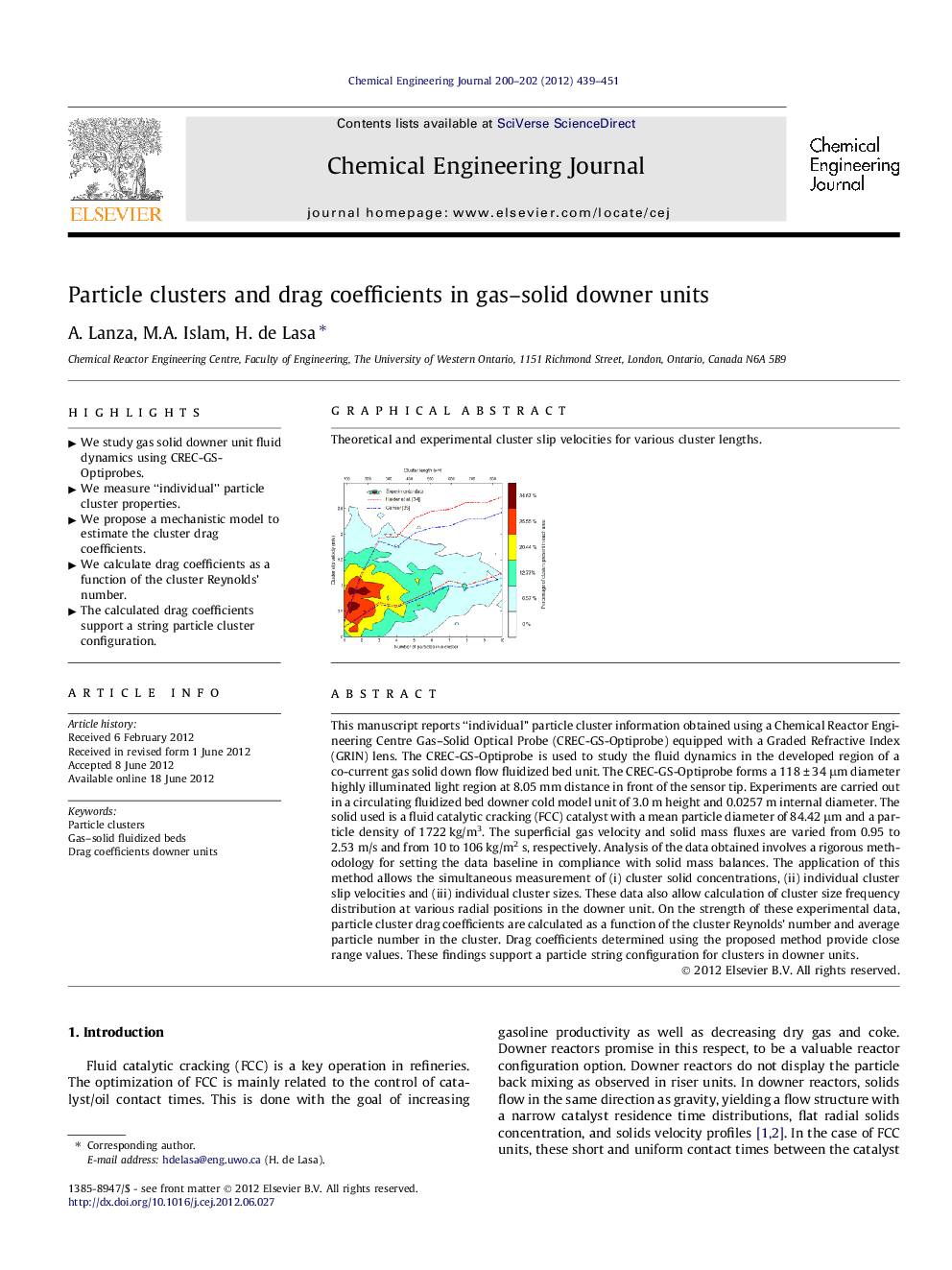| Article ID | Journal | Published Year | Pages | File Type |
|---|---|---|---|---|
| 149603 | Chemical Engineering Journal | 2012 | 13 Pages |
This manuscript reports “individual” particle cluster information obtained using a Chemical Reactor Engineering Centre Gas–Solid Optical Probe (CREC-GS-Optiprobe) equipped with a Graded Refractive Index (GRIN) lens. The CREC-GS-Optiprobe is used to study the fluid dynamics in the developed region of a co-current gas solid down flow fluidized bed unit. The CREC-GS-Optiprobe forms a 118 ± 34 μm diameter highly illuminated light region at 8.05 mm distance in front of the sensor tip. Experiments are carried out in a circulating fluidized bed downer cold model unit of 3.0 m height and 0.0257 m internal diameter. The solid used is a fluid catalytic cracking (FCC) catalyst with a mean particle diameter of 84.42 μm and a particle density of 1722 kg/m3. The superficial gas velocity and solid mass fluxes are varied from 0.95 to 2.53 m/s and from 10 to 106 kg/m2 s, respectively. Analysis of the data obtained involves a rigorous methodology for setting the data baseline in compliance with solid mass balances. The application of this method allows the simultaneous measurement of (i) cluster solid concentrations, (ii) individual cluster slip velocities and (iii) individual cluster sizes. These data also allow calculation of cluster size frequency distribution at various radial positions in the downer unit. On the strength of these experimental data, particle cluster drag coefficients are calculated as a function of the cluster Reynolds’ number and average particle number in the cluster. Drag coefficients determined using the proposed method provide close range values. These findings support a particle string configuration for clusters in downer units.
Graphical abstractTheoretical and experimental cluster slip velocities for various cluster lengths.Figure optionsDownload full-size imageDownload as PowerPoint slideHighlights► We study gas solid downer unit fluid dynamics using CREC-GS-Optiprobes. ► We measure “individual” particle cluster properties. ► We propose a mechanistic model to estimate the cluster drag coefficients. ► We calculate drag coefficients as a function of the cluster Reynolds’ number. ► The calculated drag coefficients support a string particle cluster configuration.
